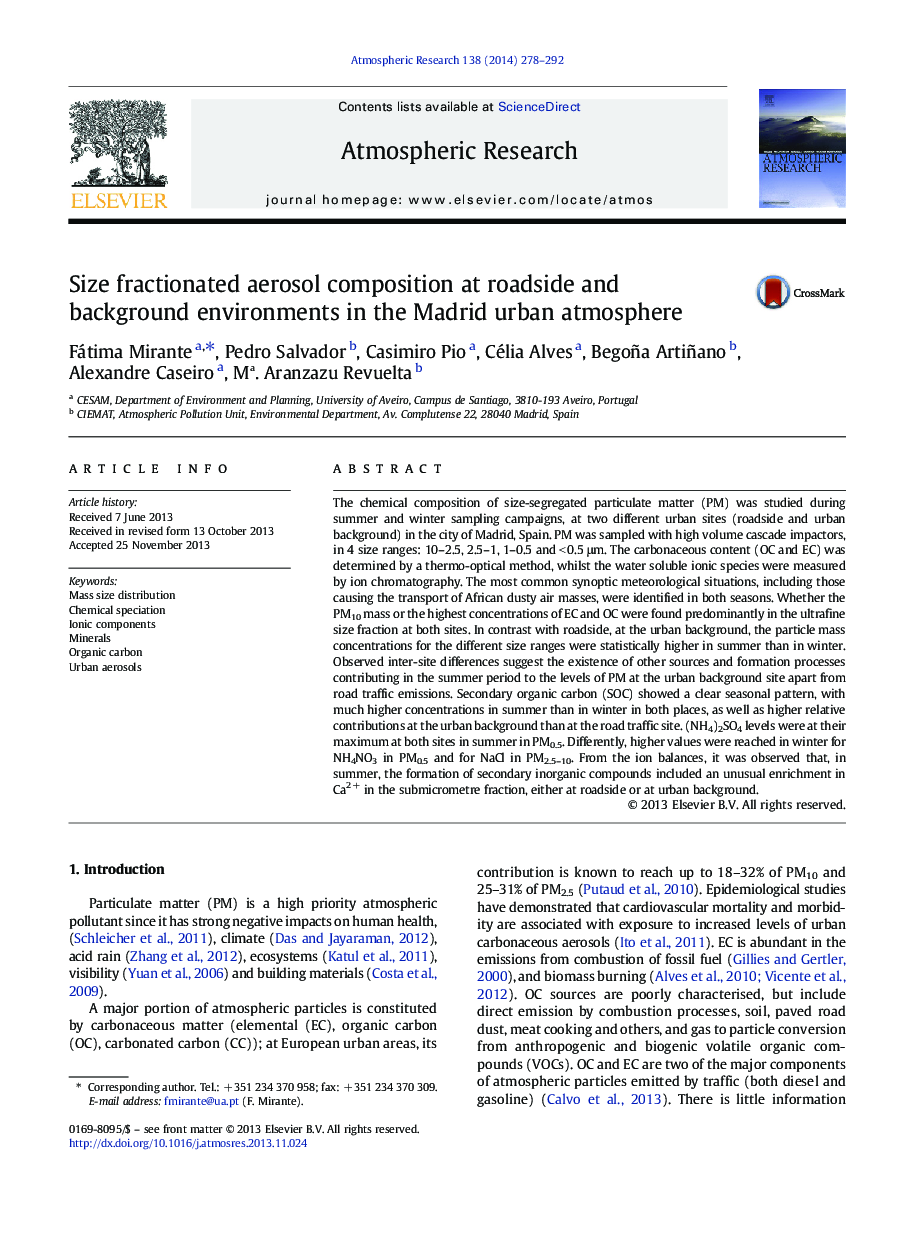| Article ID | Journal | Published Year | Pages | File Type |
|---|---|---|---|---|
| 6343655 | Atmospheric Research | 2014 | 15 Pages |
Abstract
The chemical composition of size-segregated particulate matter (PM) was studied during summer and winter sampling campaigns, at two different urban sites (roadside and urban background) in the city of Madrid, Spain. PM was sampled with high volume cascade impactors, in 4 size ranges: 10-2.5, 2.5-1, 1-0.5 and < 0.5 μm. The carbonaceous content (OC and EC) was determined by a thermo-optical method, whilst the water soluble ionic species were measured by ion chromatography. The most common synoptic meteorological situations, including those causing the transport of African dusty air masses, were identified in both seasons. Whether the PM10 mass or the highest concentrations of EC and OC were found predominantly in the ultrafine size fraction at both sites. In contrast with roadside, at the urban background, the particle mass concentrations for the different size ranges were statistically higher in summer than in winter. Observed inter-site differences suggest the existence of other sources and formation processes contributing in the summer period to the levels of PM at the urban background site apart from road traffic emissions. Secondary organic carbon (SOC) showed a clear seasonal pattern, with much higher concentrations in summer than in winter in both places, as well as higher relative contributions at the urban background than at the road traffic site. (NH4)2SO4 levels were at their maximum at both sites in summer in PM0.5. Differently, higher values were reached in winter for NH4NO3 in PM0.5 and for NaCl in PM2.5-10. From the ion balances, it was observed that, in summer, the formation of secondary inorganic compounds included an unusual enrichment in Ca2 + in the submicrometre fraction, either at roadside or at urban background.
Related Topics
Physical Sciences and Engineering
Earth and Planetary Sciences
Atmospheric Science
Authors
Fátima Mirante, Pedro Salvador, Casimiro Pio, Célia Alves, Begoña Artiñano, Alexandre Caseiro, Mª. Aranzazu Revuelta,
